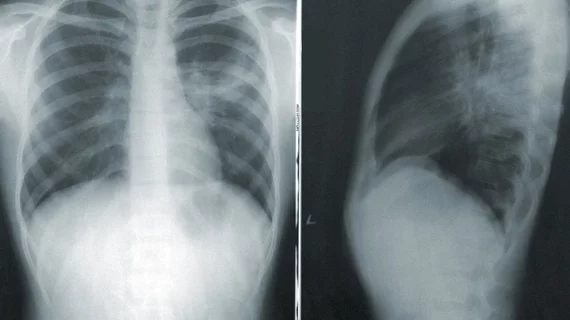New AI model calculates risk of heart attack or stroke using a single X-ray
Researchers have developed a new artificial intelligence (AI) model capable of predicting a patient’s 10-year risk of death from a heart attack or stroke—all with a single chest X-ray. The group behind this work, which includes radiologists, cardiologists and AI specialists, shared its findings at RSNA 2022 in Chicago.
“Our deep learning model offers a potential solution for population-based opportunistic screening of cardiovascular disease risk using existing chest X-ray images,” lead author Jakob Weiss, MD, a radiologist affiliated with the Cardiovascular Imaging Research Center at Massachusetts General Hospital and the AI in Medicine program at Brigham and Women's Hospital, said in a prepared statement. “This type of screening could be used to identify individuals who would benefit from statin medication but are currently untreated.”
Weiss et al. developed their AI model using more than 147,000 chest X-rays from more than 40,000 patients who participated in the Prostate, Lung, Colorectal and Ovarian Cancer Screening Trial. They then tested their algorithm with data from more than 11,000 patients who underwent an outpatient chest X-ray at Mass General Brigham. After a median follow-up period 10.3 years, nearly 10% of the patients from Mass General Brigham had suffered a major adverse cardiac event. As the team hoped, there was a significant link between the risk predicted by their algorithm and the risk of experiencing a major cardiac event.
“The beauty of this approach is you only need an X-ray, which is acquired millions of times a day across the world,” Weiss said in the same statement. “Based on a single existing chest X-ray image, our deep learning model predicts future major adverse cardiovascular events with similar performance and incremental value to the established clinical standard.”
The team emphasized that more research, including a randomized trial, is still necessary to confirm that their AI model is accurate and able to provide consistent value to clinicians. For now, however, they are clearly thrilled to share their early success.
“What we've shown is a chest X-ray is more than a chest X-ray,” Weiss said.
Additional coverage of RSNA 2022 is available here and here.

